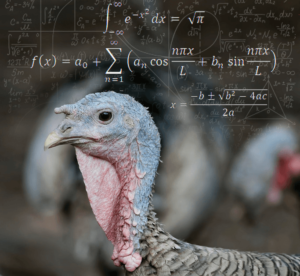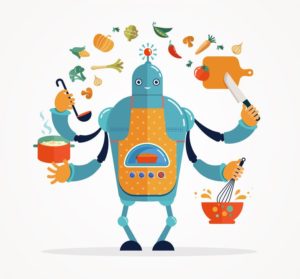Let’s talk artificial intelligence, turkeys, and artificial turkey intelligence (or artificial unintelligence, as it turns out).
Happy Thanksgiving! Each year, we at Lexalytics, an InMoment company, like to take this holiday to reflect on what we’ve accomplished and what we’re thankful for. But I’m not feeling very reflective right now. Instead, I’d like to share some articles I’ve stumbled across in the lead-up to Thanksgiving that made me stop and think, before I stop and eat (and eat, and eat, and eat, and eat).
Spoiler: the humble (and delicious) turkey is smarter than you’d think.
Artificial turkey intelligence
 I always hear people say turkeys are one of the dumbest animals, which strikes me as a bit weird. After all, they exist in the wild, so they must be smart enough to outrun predators, right? As it turns out, people (scientists, in fact) have looked into this. So, how smart are turkeys? Smarter than you’d think.
I always hear people say turkeys are one of the dumbest animals, which strikes me as a bit weird. After all, they exist in the wild, so they must be smart enough to outrun predators, right? As it turns out, people (scientists, in fact) have looked into this. So, how smart are turkeys? Smarter than you’d think.
This Washington Post article from 2013 cites a Discovery Channel piece saying,
“Due to an inherited condition called tetanic torticollar spasms, turkeys often stare at the sky for 30 seconds or more — even if it’s raining — giving the impression that they are “dumb.” Also, turkeys often tilt their heads because they have monocular vision. Their eyes are placed far apart, so they cannot focus both eyes on one image like humans can. To compensate, they tilt their heads to the side to get a better view. Turkeys are not dumb — instead they’re very social with each other and with humans.”
So, there you have it: artificial turkey (un)intelligence.
But the Google rabbit-hole doesn’t end here. Now that I’m on the subject of AI + turkey/Thanksgiving, what else can I find?
AI serves up a feast (of recipes)
 I love to cook, and I love to try new recipes. My social media feeds are filled with photos of delicious food. But asking my friends for recipes doesn’t make sense. After all, half of what they post are dishes they got at a restaurant or café. Usually I just have to guess what’s in them, and then search for similar recipes on my own.
I love to cook, and I love to try new recipes. My social media feeds are filled with photos of delicious food. But asking my friends for recipes doesn’t make sense. After all, half of what they post are dishes they got at a restaurant or café. Usually I just have to guess what’s in them, and then search for similar recipes on my own.
Lucky for me, MIT is here to save the day with their Pic2Recipe project.
All I have to do is upload a photo of a recipe I like, and Pic2Recipe will tell me what’s in it and how to cook it. The system utilizes GPU-accelerated deep learning and a database of more than 1,000,000 recipes and 800,000 food photos. The results are amazing, and the potential is huge.
Shout-out to Jamie Beckett on nVIDIA’s blog for introducing me to Pic2Recipe. Check out her article, then try Pic2Recipe for yourself!
AI, savior of Thanksgiving?
Everyone’s talking about the threat of AI job automation. In a fascinating Huffington Post article, Can Artificial Intelligence Save Thanksgiving?, Ariel Conn points out how, looking back through history, “we see that big advances in technological capabilities do tend to displace workers initially.” But Conn clarifies that in the longer term, the labor market will actually grow and create more jobs. And, Conn says, “for those who want to see more employees spending the holidays with their families, this move toward automated, online shopping could be good news.”
This ties into Paul Barba’s latest piece on The Drivers and Social Responsibility of Automation. Paul argues that, “Those of us working in automating industries have a duty to think carefully and advocate for our efforts to move in socially positive directions.” AI and automation are coming – it’s our responsibility to acknowledge AI’s disproportionate impact on lower-income workers and make sure that they, too, can be thankful for artificial intelligence.
Happy Thanksgiving!